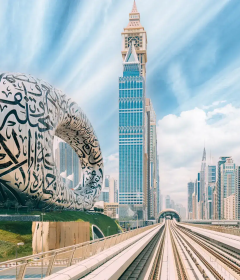Mashrabiya Design Cutting Incorporates Traditional Elements into Modern Architecture

Mashrabiya design cutting is a traditional architectural element that has been used in Middle Eastern architecture for centuries. It refers to the intricate wooden screens or latticework that is often found on windows, balconies, and other openings in buildings. These screens serve several purposes, including providing privacy, controlling sunlight and ventilation, and adding decorative detail to the building’s facade. Read this article to get more info about mashrabiya design cutting.
Cultural heritage meets contemporary expression:
Mashrabiya design cutting offers architects and designers a unique opportunity to pay homage to the rich cultural heritage of the Middle East while infusing projects with a contemporary sensibility. By incorporating mashrabiya-inspired patterns and motifs into facades, partitions, or interior elements, architects can create spaces that resonate with historical significance while embracing modern design principles. This blend of tradition and innovation fosters a sense of cultural continuity and identity within the built environment.
Functional versatility and environmental sustainability:
Beyond its ornamental value, mashrabiya design cutting serves practical functions that align with sustainable design practices. The intricate lattice patterns of mashrabiya screens promote natural ventilation and daylighting, reducing the reliance on artificial heating, cooling, and lighting systems. Additionally, mashrabiya screens provide shading and privacy without completely obstructing views, enhancing thermal comfort and energy efficiency within buildings. By integrating mashrabiya-inspired elements, architects can create environmentally responsive designs that prioritize both aesthetic appeal and sustainability.
Aesthetic diversity and design flexibility:
Mashrabiya design cutting offers a diverse range of aesthetic possibilities, allowing architects to explore different patterns, scales, and materials to suit the context and theme of a project. Whether it’s through laser-cut metal panels, CNC-milled wood screens, or 3D-printed polymer elements, mashrabiya-inspired designs can be realized in various materials and techniques, offering unparalleled design flexibility. This adaptability enables architects to tailor mashrabiya elements to meet specific functional requirements while enhancing the visual interest and spatial dynamics of architectural compositions.
Cross-cultural dialogue and global inspiration:
Incorporating mashrabiya design cutting into modern architecture fosters cross-cultural dialogue and exchange, transcending geographical boundaries and historical epochs. Architects draw inspiration from diverse cultural traditions and reinterpret them through a contemporary lens, enriching the architectural vocabulary with fresh perspectives and ideas. Whether it’s in the form of a residential villa, a commercial complex, or a public institution, mashrabiya-inspired design elements serve as catalysts for cultural appreciation, innovation, and mutual understanding in a globalized world.


